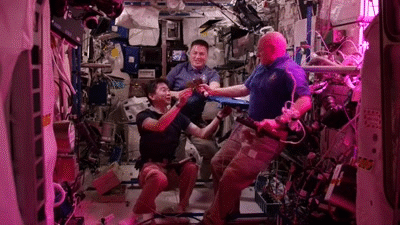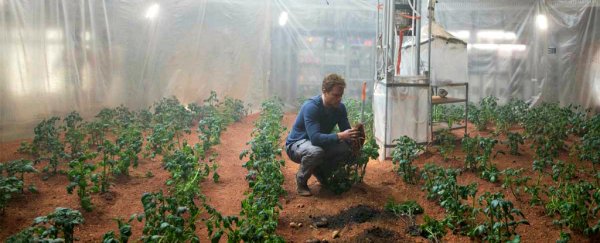In an experiment testing how well we can grow crops in space, scientists have managed to harvest 10 crops, including tomatoes, peas, and rye, from soil that mimics the conditions on Mars.
Although the Mars-equivalent soil produced slightly fewer crops than regular Earth soil, the difference wasn't huge, suggesting that, in the right conditions, early settlers might be able to sustainably feed themselves with crops grown on the Red Planet. The dream of a Martian colony just got a little bit closer.
"The production of biomass on the Mars soil simulant was lower than on Earth control, but it was a minor difference and caused by one of the trays that showed less growth," said lead researcher Wieger Wamelink from Wageningen University & Research centre in the Netherlands. "That was a real surprise to us. It shows that the Mars soil simulant has great potential when properly prepared and watered."
The researchers also grew the same 10 crops - tomato, rye, radish, pea, leek, spinach, garden rocket, cress, quinoa, and chives - in soil that mimicked Moon soil, and showed that these crops were about half as successful as Mars crops, with spinach in particular struggling in the lunar environment.
So how do you find soil that's chemically similar to kind you'd find outside of Earth? You head to some of the most extreme places on our planet. The 'Mars' soil came from a volcano on Hawaii, while 'Moon' soil was collected in a desert in Arizona. These were then mixed with fresh cut grass in shallow trays, which made it easier to water the crops. A control tray contained regular Earth potting compost.
Before you get too excited and start packing your gardening gear for Mars, there are a few things to flag here - first of all, the results haven't been published, so we're currently taking Wageningen University's word for it (for the record, this is their second experiment on space crops, so it's not an unreliable word to take, but we're always wary until we see peer-reviewed findings).
The study also only mimicked soil on Mars and the Moon, and not the rest of their conditions - such as the harsh space radiation, or the bitter heat and cold.
The crops were grown in a glass house under Earth's atmosphere, with stable humidity, light, and temperature - but Wamelik explains that this is because "we expect that first crop growth on Mars and Moon will take place in underground rooms to protect the plants from the hostile environment". That's fair enough, but we still can't predict exactly how being on another planet will affect the process.
Finally, the most crucial phase of the experiment - determining whether these plants are safe to eat - hasn't commenced as yet. And there's no point growing crops if they're going to poison us.
"The soils contain heavy metals like lead, arsenic, and mercury and also a lot of iron," said Wamelink. "If the components become available for the plants, they may be taken up and find their way into the fruits, making them poisonous."
The team is now crowdfunding further research on this subject, with experiments scheduled to start in April this year.
But despite the limitations, it's still pretty exciting to know that soil on the Red Planet is capable of growing our food crops - because there's nothing more comforting when you're billions of kilometres from home than fresh vegetables.
Last year, astronauts also managed to grow and eat the first lettuce on board the International Space Station - which, tbh, looked pretty tasty - so we're getting closer to being able to pull a Mark Watney and farm extraterrestrial land than ever before. Bring it on.
 NASA
NASA
